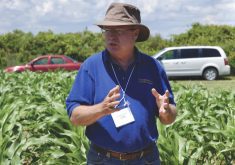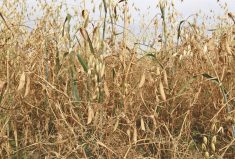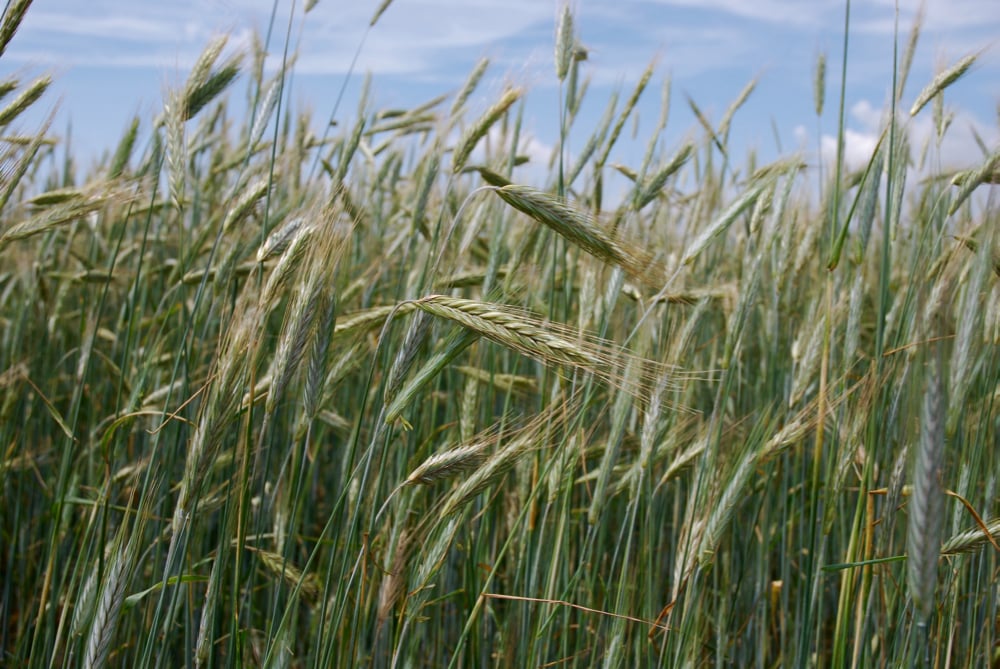From time to time, farmers can find themselves caught by a development or issue that sneaks up on them. At first, it can seem trivial, even ridiculous. But it’s like ignoring a train in the distance: before you know it, it’s speeding up on you and it’s too late to react.
Changes to Ontario’s Endangered Species Act (ESA) and the manner in which they are being enforced may be viewed in much the same way. With little information or fanfare, municipalities and counties have been told that if endangered species are found in the drains and drainage ditches adjacent to farms, they will have to protect those at-risk species.
Read Also

Agronomists share tips for evaluating new crop products and tech: Pt. 3
With new products, new production practices and new technology converging on the agriculture industry at a frenetic pace in recent…
Failure to do so could result in fines up to $1 million for municipalities or $250,000 for individuals, not to mention possible imprisonment for up to one year.
What’s distressing beyond the penalties is that farmers are being told that what they’re doing or what they’ve done to improve water quality from their fields is not a priority: saving endangered species is.
In spite of all they have invested in tile drainage installation and maintenance or the timely removal of water from their fields (and what that means to normal operations), any endangered species found adjacent to their fields take priority. And it’s not just the investments or the water flow off the fields, it’s also the enhancements to the entire wildlife chain in those adjoining waterways that are now secondary to the protection of endangered species.
Much of the current furor surrounding the ESA, and the confusion that has resulted, began early this year. In January, a story in the Chatham Daily News highlighted the changes and their impacts on the Municipality of Chatham-Kent, in the southwestern corner of Ontario. Chatham-Kent stands to be affected most by these directives from the Ministry of Natural Resources and Forestry (MNRF), since the municipality has more than 4,200 drains, i.e. roughly 20 per cent of those found in Ontario.
According to Tim Dick, director of drainage, asset and waste management with the Municipality of Chatham-Kent, the changes that have been most daunting actually took effect July 1, 2015. Prior to that, there was an agreement signed between the municipalities and MNRF securing a series of best management practices that the municpalities agreed to follow when doing drain maintenance and during projects to repair or improve existing drains. After that date, the Ministry cancelled those agreements.
“Where we believe we’re headed with this approach is to resurrect a lot of the concepts already hammered out through those agreements, building on them if possible and adding in any new species which either weren’t covered or have been added since that time,” says Dick.
Easier said than done
Part of the challenge, however, is that reaching any final solution is like aiming at a moving target: the registry of endangered species is always being redefined and reworked. But the MNRF isn’t helping identify practices needed for safeguarding those species, new or existing. It is now the job of the municipality or the county to find the biologists or environmental specialists with the necessary expertise to develop a workable framework that gets MNRF approval.
That it might add to a municipality or county’s operating budget does not appear to be part of the consideration. Instead, the local government is directed to find the right person with the appropriate expertise, develop a plan that will safeguard an endangered species, and then wait for MNRF approval of the project. The guidelines under the ESA apply to both land-based and aquatic species, so this really does affect any and all farmers, whether or not they have drainage ditches adjacent to their land.

“Which act takes precedent?” asks Dick. “Do the two acts (the Endangered Species Act and the Drainage Act) get along with each other? The answer is that we’re expected to comply with both acts, so the expectation is that we will merely comply and in doing so, we have to somehow come up with a strategy to see to it that we can comply.”
Complying with the Drainage Act can be a challenge at times, but there’s a history and knowledge base of how to manage within its confines, so there isn’t a lot of concern with it. The Endangered Species Act is something entirely different. Within the ESA, there are different species, with mitigating measures, timing window restrictions, and best management practices (BMP). Extra complications include identifying the particular species involved and understanding its potential vulnerability to the crop growing nearby, its growing season and its water cycling needs. Then, planners have to ask, how does the Drainage Act have an impact on all of this?
“The reality is that the two acts may work against each other, so trying to manage all of this is what it comes down to,” adds Dick, stating that there are also concerns relating to additional costs and administration of timelines. In the past, Chatham-Kent drainage staff has managed as many as 600 drainage projects in one year. Now the department has to include an additional administrative layer, including finding the specialist (or specialists) needed to work within the confines of the two acts. “There will have to be new and different people brought in for consultation, and somebody’s going to have to pay that cost. So the question is: Who are the right people to pay?”
The other point that Dick emphasizes is that in spite of any opinions on who should pay, the costs may be levied to all the drains that are worked on in a given year. Or it might be paid by the drainage contractors or from out of the general funds of the municipality. Or maybe the grower will pay into the final costs. But the more those costs are shared among a larger community, the less the impact it should have on the individual. And Dick believes that since everyone theoretically benefits from protected species, the cost should be borne by everyone.
That leads to another question: Who’s behind this? Is this a matter of offloading or downloading costs from the province on to the budgets of municipalities? It’s hoped that the province isn’t purposely trying to make it harder to be a farmer. But maybe the provincial ministry involved is being pressured by environmentalists and special interest groups to protect species that 20 years ago were little more than afterthoughts.
Dick believes that changes implemented via ESA may be achieving results contrary to the act’s intent. The goal of the act on its own is to protect species that are deemed to be in danger. The problem is the impact of how it’s administered, which could have the opposite effect of protecting a species, especially when it appears to be carried out without consideration of the participants or the practicality of the impact or the costs. That could prompt landowners to simply eliminate the habitat of the endangered species to avoid added costs and management.
The LICO perspective
How this plays out across the province is of particular interest to the Land Improvement Contractors of Ontario (LICO), the association overseeing drainage contractors. More than increasing the value of an acre of farmland, LICO has been involved in research into habitat improvement and maintenance, and research into water quality and phosphorus-loading of soils. The organization has also promoted the benefits of tile drainage with respect to wildlife, and how smaller species of fish in a farmer’s drain can affect the life cycle of larger lake-based species that are valued by commercial fishermen and sport fishing enthusiasts.
Matt Williams is the past president for LICO and, operating as he does in Perth County, has yet to encounter any resistance through the ESA. With the history of the Drainage Act dating back more than 100 years, Williams says the impetus is to keep professional contactors just that — professional — and to stand up on behalf of contractors and the work they do.
“As a contractor, communicating to our customers is the first step,” says Williams, who operates Williams Drainage near Listowel, Ont. “The sad part of the whole thing is when you get a situation like this where there is a poor working relationship, you find people do what they want, knowing the problems that await by doing it by the book. That’s not the answer; a proper working relationship is the key to helping all parties.”
Williams adds his voice to Dick’s contention that added costs and the potential for delays in projects will result from the design changes necessary to accommodate the demands of the ESA. In some cases, he suggests, the project may not even go ahead at all.
Peter Johnson, an agronomist for Real Agriculture, is also the environmental advocate for LICO. While he acknowledges that protecting endangered species is always a priority, the challenge comes when that goal is promoted as the only outcome to be considered. Drains were installed to improve or increase agricultural production, he says, which helps build the economy and creates jobs, along with reducing watercourse pollution.
“High levels of production in agriculturally productive areas actually protect endangered species in other areas,” says Johnson. He adds that in vast areas of less productive land, natural habitats would be destroyed for food production if sufficient food were unavailable. “Acts such as the Endangered Species Act need to work in concert with the Drainage Act, but not supersede it,” he says. “In many cases, the endangered species might not have even been in the area if it were not for the drain. The two acts need to come together in agricultural settings in a seamless manner, not in a head-on collision.”
Johnson agrees with Dick that such a clash of legislations could be damaging to drainage contractors. Where and how ditches are cleaned up may become a barrier to certain projects, considering the extra costs, timelines and even the practicality of completing the work.
For now, it’s hoped that the issue can be resolved to determine the best outcome for everyone involved. In an ideal setting, LICO — along with the Drainage Superintendants Association of Ontario (DSAO) and the land drainage committee of the Ontario Society of Professional Engineers (OSPE) — will also become a part of the process, to help avoid potential and costly conflicts.
But the key is getting more people involved. Drainage contractors and farmers must do more to familiarize themselves with the directives that they’re expected to incorporate. This will hit all parties involved in drainage activities, not just the contractors.
“I would reiterate the importance of drainage to sustainable agriculture and the environment,” says Johnson.
“The value of drainage cannot be overstated, and the value of the agricultural sector to this province is massive. We need to work together to protect endangered species, but not be hamstrung by a narrow vision that costs too much or where the bureaucracy essentially grinds all things to a halt.
















